
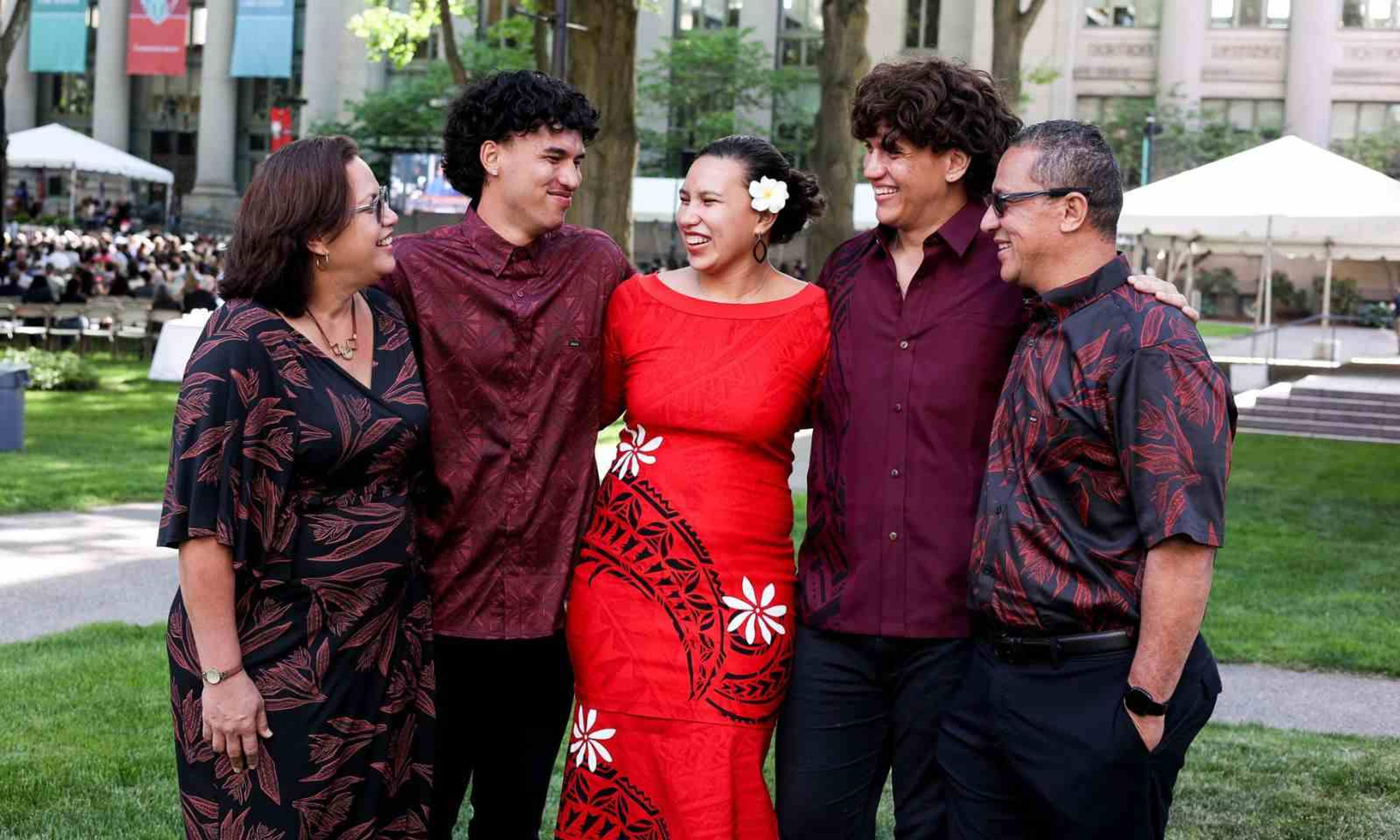
The Langkilde aiga.
Photo/Supplied
From American Sāmoa to Harvard: Pacific trailblazer speaks on Ivy League reality
Gabrielle Langkilde successfully carried through the heavy expectations of her village which proudly called her "Harvard's girl", but she says graduating wasn't as easy as it looked on the surface.


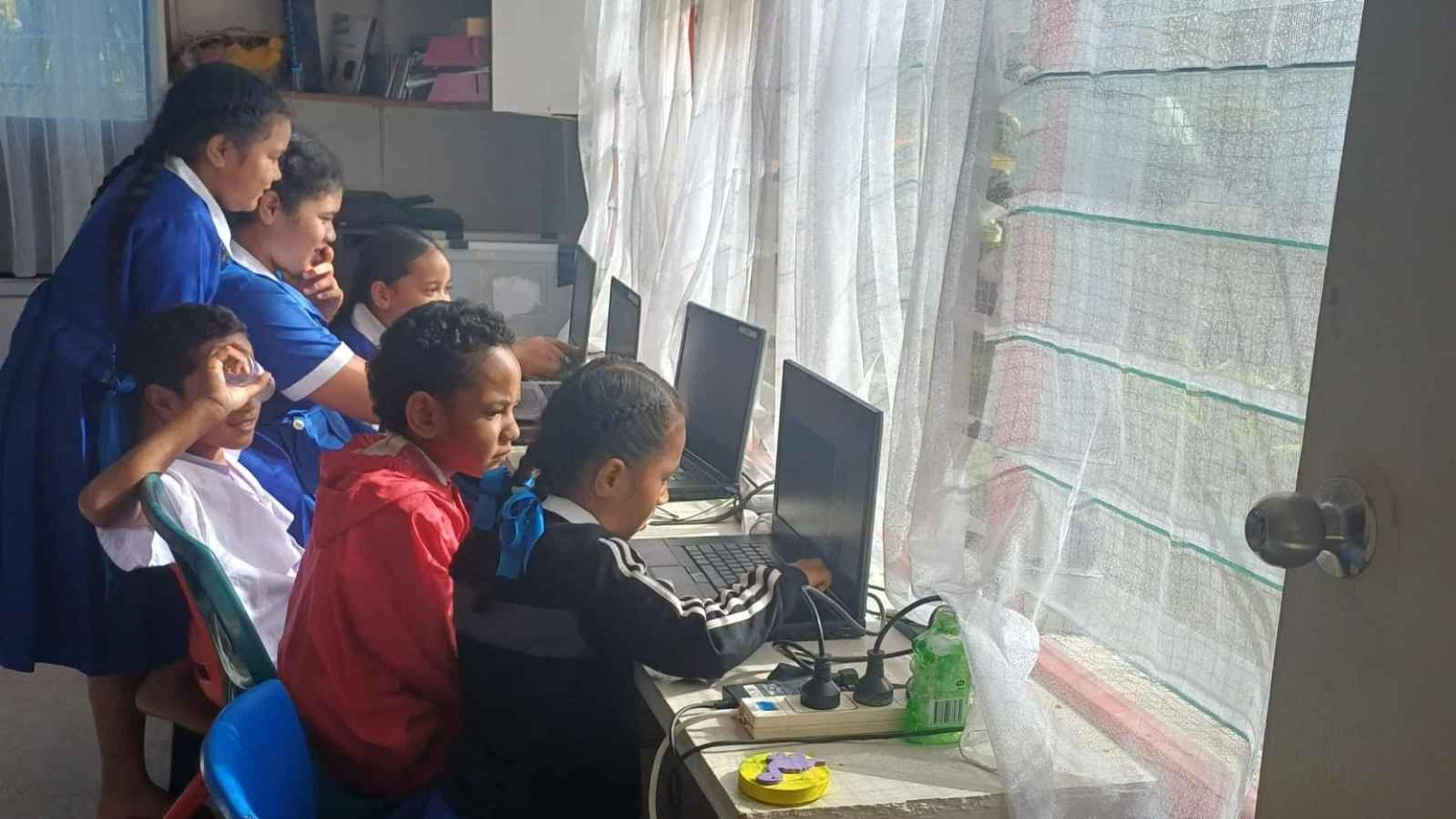
‘A Library for the Heart of Tonga’: Building a hub for Nuku’alofa
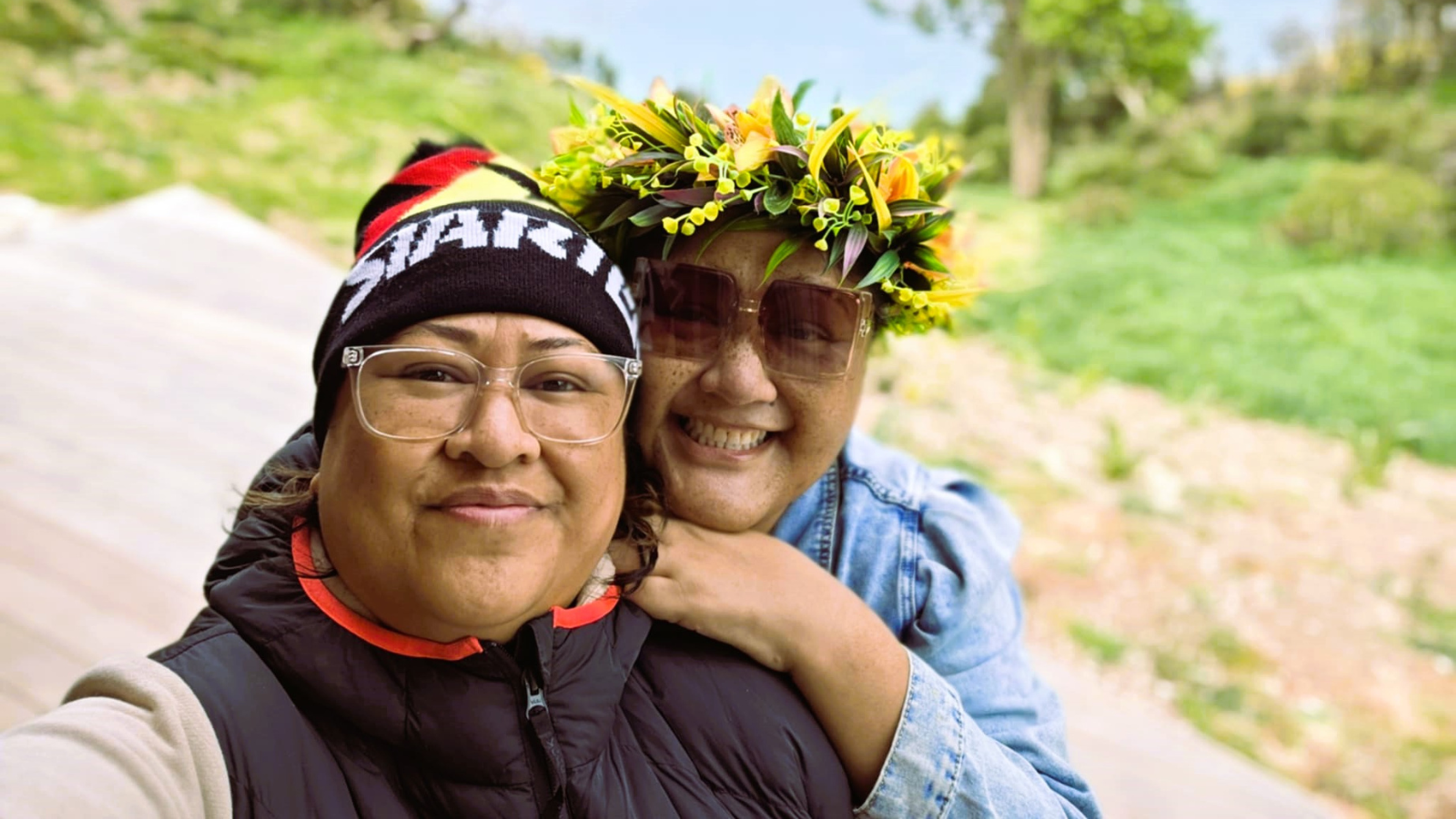
The phone call that changed everything: Social worker’s new life after kidney transplant

Tonga Touch Rugby Masters call on diaspora to pull on the red and white again


Mental health targets risk hiding Pacific people in crisis, expert

‘A Library for the Heart of Tonga’: Building a hub for Nuku’alofa

The phone call that changed everything: Social worker’s new life after kidney transplant

Tonga Touch Rugby Masters call on diaspora to pull on the red and white again
"Who else comes from a background like yours? Who else has a perspective like yours? No one".
That's how American Sāmoan and Harvard graduate Gabrielle Langkilde (Pago Pago and Leloaloa of Tutuila, Salamumu of Upolu, Sale'aula of Savai'i, Manono) encourages the younger generations in her life to pursue their dreams.
Langkilde is currently on an exchange programme via a Fulbright US Graduate Award, from the University of Hawai'i to Auckland University, having attended Harvard College prior to that.
A go-getter who participated in a variety of academic and athletic competitions during high school, Langkilde says American Sāmoa is where her heart is, and that her two brothers are her "built-in best friends".
Going from the village of Tafuna in American Sāmoa, with a population of over 45,000 where “everybody knows everybody”, to the vast but isolating city of Boston in the US was jarring for Langkilde.
"It's nice to have a tight-knit community," she says.
"Grandma and Grandpa are a short drive away and all your cousins live in the same place.
"I think I took it for granted before leaving home."
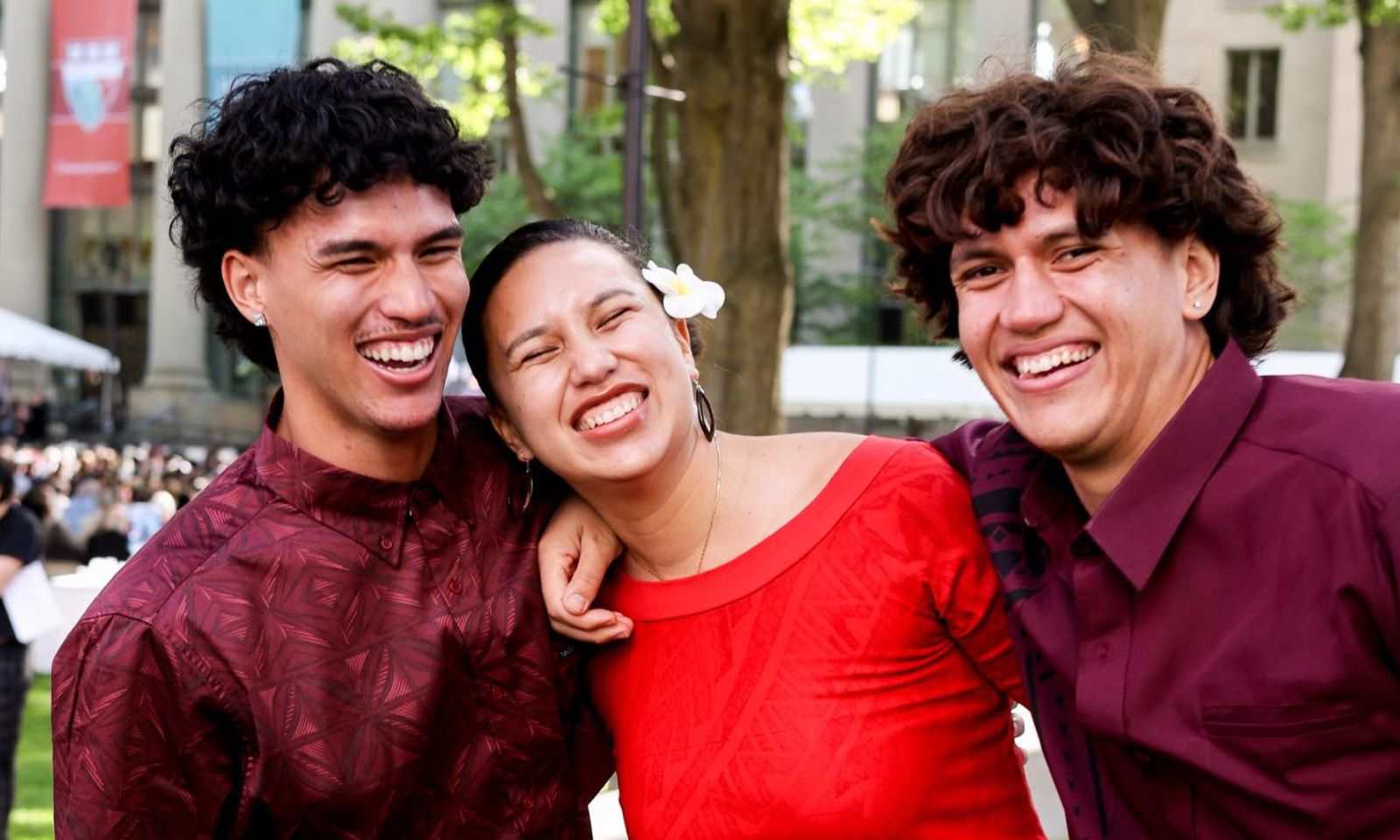
Gabrielle and her two brothers. Photo/Facebook/Gabrielle Langkilde
Langkilde says she had always wanted to go to a major college, but that getting off-island was usually achieved by "either joining the military or playing football".
Despite this she consciously built her resume, maintaining a 4.0 GPA and doing as many extracurriculars as possible, hence the aforementioned academic and athletic competitions.
Although Langkilde longed to go to an Ivy League school she says it “wasn’t a path you often saw”.
She says she was fortunate her math teacher, Miss Seongshim Park, planted the seed in her mind, telling her since young that she would end up in Harvard.
"Even my family thought that idea was crazy at first. Nobody was going to Harvard from back home so I don't blame them for that reaction."
She says however once her parents knew she was serious about it that, just like with all their children, they supported her saying "if you want to do that, do it".
"I definitely wouldn't have been able to do a lot of the things that I've been able to do without the village at home that has brought me up."
Step one, applying for Harvard: Easier said than done
Langkilde says she kept her Harvard application a secret in light of the low acceptance rate of Ivy League schools.
Looking back she says she regrets the secrecy because "when you don't tell people you can't ask for help". At the time Langkilde only told her parents, a mentor and a couple of close friends which meant they had to navigate the application system without much help, experience or knowledge.
"I actually wrote my essay for my application when I was at Salamumu in Sāmoa watching my dad get his pe'a (traditional tattoo for Sāmoan males).
"For these application essays, you have to talk about yourself, where you're from and your culture so what better environment than watching your dad represent his culture in one of the biggest ways."
Langkilde could not submit her application however until she returned to American Sāmoa due to a lack of internet connectivity in Salamumu.
She successfully sent it, however, on the deadline's last day. Within a week after interviewing with Harvard officials she received her letter of acceptance.
Neither military personnel nor a football player: ‘Gabby got into Harvard!’
Langkilde says she opened her acceptance letter with her friend in their computing class where upon reading the result they excitedly jumped up and down.
"The class was like 'what happened?' My friend was like 'Gabby got into Harvard!' They were like 'yeah right'" Langkilde laughs.
"It was so funnily anticlimactic, nothing like those viral videos of kids opening their decision letters and getting into Ivy League Schools. But it was also such a classic demonstration that that just doesn't really happen in American Sāmoa."
'I don't think I'm supposed to be here': A rocky first year
Langkilde says in her first year she took an entry-level Biochemistry class which resulted in a D grade on her first midterm.
"I never in my life got one. All my friends in that class said they did so badly and their grades were like a B.
"I remember going into the library that day, I was about to cry."
She says she called her mother saying she genuinely believed her application must have gotten mixed up with another applicant.
"I told her I don't think I'm supposed to be here. I felt like I was sitting in somebody's seat.
"I remember feeling so down. It's so hard because you look around and nobody from home's here. I felt really alone."

From the sunny shores of American Sāmoa to the snow-heavy winters of Boston. Photo/Supplied
Langkilde says her village’s massive support also inadvertently placed pressure on her, where she felt compelled to succeed and fulfill the high hopes behind people at home proudly calling her their "Harvard's girl".
Additionally, the rare opportunity she had compounded the guilt that would ensue if she failed.
However, Langkilde says she was too hard on herself, especially considering high schools in American Sāmoa did not have as many resources to prepare students for Ivy League Colleges as some of her peers. Additionally, a few students she met at Harvard had attended prestigious boarding schools such as Exeter or Andover prior to their enrollment.
"That first year was rough."
Finding balance, pursuing the knowledge of our ancestors
Langkilde eventually found her footing and graduated with a major in Women, Gender and Sexuality Studies with a minor in Sociology. As a East West Center Graduate Degree Fellow, she is now pursuing a master's in Pacific Studies at the University of Hawai'i at Mānoa.
"I love it. I loved my first semester. It's so different from Harvard because I don't just see the Pacific reflected in the people I go to school with but in the content I'm studying."
She says initially she wanted to become a professor, but during her undergraduate studies she abandoned the goal due to a bad experience in academia.
However, other than providing a space for Pacific peoples the University also brought Solomon Islander Dr Tarcisius Kabutaulaka, also known as "Dr Tara", into her life, where he restored her faith in academia.
"I love that guy. I still don't want to be a professor but I think if I had met him in undergrad I still would have."
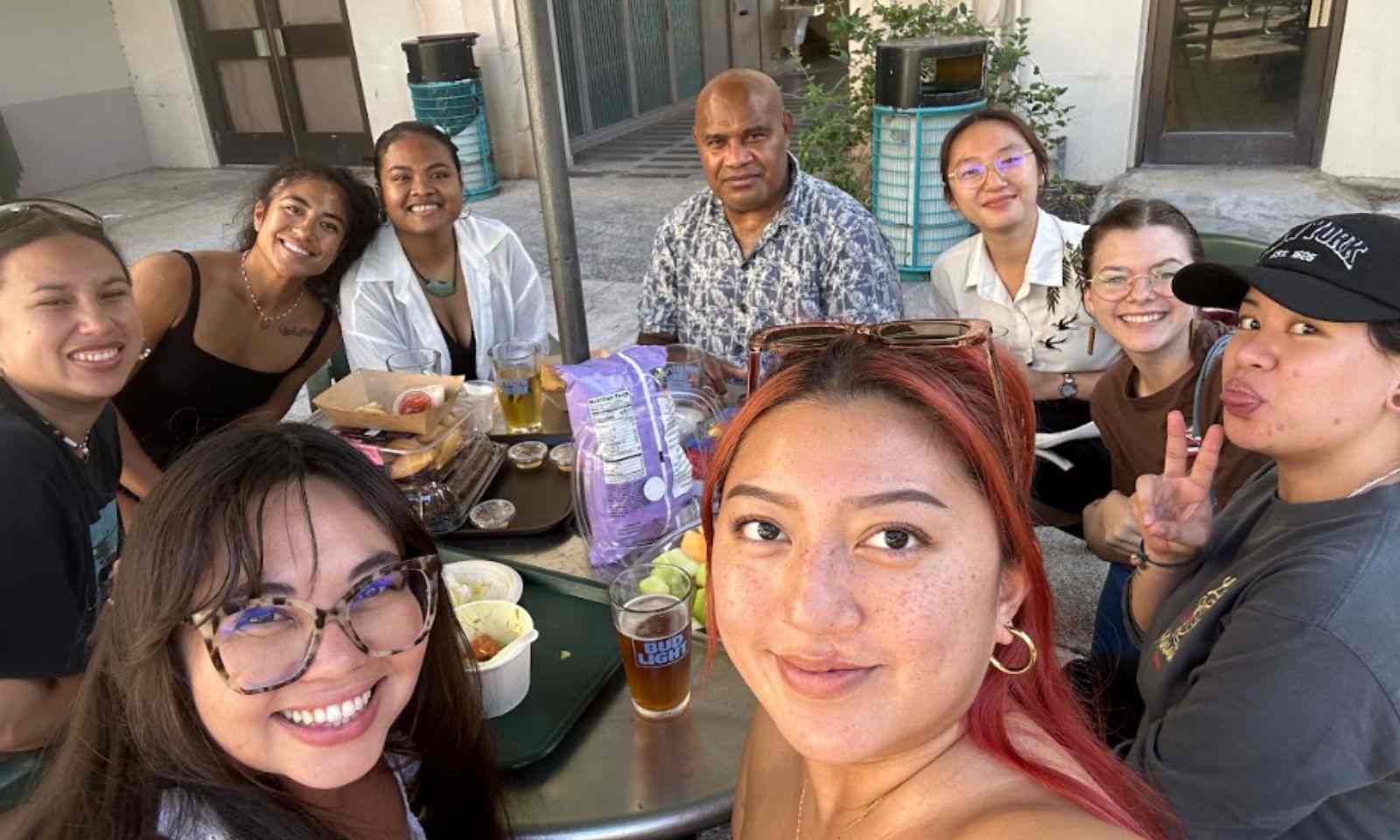
Langkilde alongside Dr Tara and her Pacific Studies peers. Photo/Supplied
Pasefika Presence: From uplifting visibility of American Sāmoa to uplifting home
Langkilde is the executive editor of the Pasefika Presence magazine, a medium that helps her platform Pacific art and stories which she hopes to continue to do after her studies.
The magazine started as a column she wrote for the Harvard Crimson in 2019, which then became what it is today thanks to support from both her mother and her father, who's the principal of an elementary school that Langkilde taught eighth-grade social studies at.
"My kids didn't know much about the Pacific. I was probably the same way as a kid."
She says her kids knew more about the American Revolutionary War than the histories of the Pacific and that many at the school were reading at levels below their grade.
"I thought about what I could do to help. I always wanted to do something with my column and mom suggested turning it into a magazine.
"Magazines are easier to read than textbooks. I had even read a study around magazines helping literacy levels, and thought it might be cool if students could read this in the classroom one day."
She says her mother also pointed out that the medium was good for platforming other Pacific peoples which therefore would avoid homogenising the magazine's insights into just the American Sāmoan experience.
"In my own experience, I’ve found the art space as being able to hold the complexities of our people in a way that academia doesn’t always do the best job at.”
“It can be scary to take nuanced stances in academia that might be slightly critical of our culture because of how outsiders might take it and run; citing it for purposes that it was not intended for.
"Often in academia, I’ve felt the pressure to generalise and draw results to prove something when it's not so clear-cut all the time.
"When we published our first issue we had contributors from all over the Pacific and diaspora who had submitted poetry, art, short stories, and articles talking about so many different things - culture, identity, mental health, climate change, gender, and more!"
To Pacific peoples everywhere: 'You're a blessing'
Just a few years ago there was an American Sāmoan student sitting in a university library on the brink of tears, feeling like a grade result determined her unworthy of the space she took up.
To her and the many Pacific peoples out in the world who feel the same, Langkilde says: "You're a blessing to that place.
"Never feel like you're taking somebody's space, that you're not worthy to be there. Turn it on its head and say 'this place is lucky to have me'.
"That's what I tell my kids to encourage them to apply to school because they fear they’ll fail all those classes.
“I did and I'm still out here."